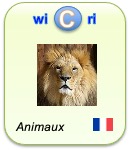Links to Exploration step
Le document en format XML
<record><TEI><teiHeader><fileDesc><titleStmt><title xml:lang="en">TaxI: a software tool for DNA barcoding using distance methods</title><author><name sortKey="Steinke, Dirk" sort="Steinke, Dirk" uniqKey="Steinke D" first="Dirk" last="Steinke">Dirk Steinke</name><affiliation><nlm:aff id="aff1"><institution>Lehrstuhl für Zoologie und Evolutionsbiologie, Department of Biology, University of Konstanz</institution><addr-line>78457 Konstanz, Germany</addr-line></nlm:aff></affiliation></author><author><name sortKey="Vences, Miguel" sort="Vences, Miguel" uniqKey="Vences M" first="Miguel" last="Vences">Miguel Vences</name><affiliation><nlm:aff id="aff2"><institution>Institute for Biodiversity and Ecosystem Dynamics, University of Amsterdam</institution><addr-line>Zoological Museum, Mauritskade 61, 1092 AD Amsterdam, The Netherlands</addr-line></nlm:aff></affiliation></author><author><name sortKey="Salzburger, Walter" sort="Salzburger, Walter" uniqKey="Salzburger W" first="Walter" last="Salzburger">Walter Salzburger</name><affiliation><nlm:aff id="aff1"><institution>Lehrstuhl für Zoologie und Evolutionsbiologie, Department of Biology, University of Konstanz</institution><addr-line>78457 Konstanz, Germany</addr-line></nlm:aff></affiliation></author><author><name sortKey="Meyer, Axel" sort="Meyer, Axel" uniqKey="Meyer A" first="Axel" last="Meyer">Axel Meyer</name><affiliation><nlm:aff id="aff1"><institution>Lehrstuhl für Zoologie und Evolutionsbiologie, Department of Biology, University of Konstanz</institution><addr-line>78457 Konstanz, Germany</addr-line></nlm:aff></affiliation></author></titleStmt><publicationStmt><idno type="wicri:source">PMC</idno><idno type="pmid">16214755</idno><idno type="pmc">1609227</idno><idno type="url">http://www.ncbi.nlm.nih.gov/pmc/articles/PMC1609227</idno><idno type="RBID">PMC:1609227</idno><idno type="doi">10.1098/rstb.2005.1729</idno><date when="2005">2005</date><idno type="wicri:Area/Pmc/Corpus">000025</idno><idno type="wicri:explorRef" wicri:stream="Pmc" wicri:step="Corpus" wicri:corpus="PMC">000025</idno></publicationStmt><sourceDesc><biblStruct><analytic><title xml:lang="en" level="a" type="main">TaxI: a software tool for DNA barcoding using distance methods</title><author><name sortKey="Steinke, Dirk" sort="Steinke, Dirk" uniqKey="Steinke D" first="Dirk" last="Steinke">Dirk Steinke</name><affiliation><nlm:aff id="aff1"><institution>Lehrstuhl für Zoologie und Evolutionsbiologie, Department of Biology, University of Konstanz</institution><addr-line>78457 Konstanz, Germany</addr-line></nlm:aff></affiliation></author><author><name sortKey="Vences, Miguel" sort="Vences, Miguel" uniqKey="Vences M" first="Miguel" last="Vences">Miguel Vences</name><affiliation><nlm:aff id="aff2"><institution>Institute for Biodiversity and Ecosystem Dynamics, University of Amsterdam</institution><addr-line>Zoological Museum, Mauritskade 61, 1092 AD Amsterdam, The Netherlands</addr-line></nlm:aff></affiliation></author><author><name sortKey="Salzburger, Walter" sort="Salzburger, Walter" uniqKey="Salzburger W" first="Walter" last="Salzburger">Walter Salzburger</name><affiliation><nlm:aff id="aff1"><institution>Lehrstuhl für Zoologie und Evolutionsbiologie, Department of Biology, University of Konstanz</institution><addr-line>78457 Konstanz, Germany</addr-line></nlm:aff></affiliation></author><author><name sortKey="Meyer, Axel" sort="Meyer, Axel" uniqKey="Meyer A" first="Axel" last="Meyer">Axel Meyer</name><affiliation><nlm:aff id="aff1"><institution>Lehrstuhl für Zoologie und Evolutionsbiologie, Department of Biology, University of Konstanz</institution><addr-line>78457 Konstanz, Germany</addr-line></nlm:aff></affiliation></author></analytic><series><title level="j">Philosophical Transactions of the Royal Society B: Biological Sciences</title><idno type="ISSN">0962-8436</idno><idno type="eISSN">1471-2970</idno><imprint><date when="2005">2005</date></imprint></series></biblStruct></sourceDesc></fileDesc><profileDesc><textClass></textClass></profileDesc></teiHeader><front><div type="abstract" xml:lang="en"><p>DNA barcoding is a promising approach to the diagnosis of biological diversity in which DNA sequences serve as the primary key for information retrieval. Most existing software for evolutionary analysis of DNA sequences was designed for phylogenetic analyses and, hence, those algorithms do not offer appropriate solutions for the rapid, but precise analyses needed for DNA barcoding, and are also unable to process the often large comparative datasets. We developed a flexible software tool for DNA taxonomy, named TaxI. This program calculates sequence divergences between a query sequence (taxon to be barcoded) and each sequence of a dataset of reference sequences defined by the user. Because the analysis is based on separate pairwise alignments this software is also able to work with sequences characterized by multiple insertions and deletions that are difficult to align in large sequence sets (i.e. thousands of sequences) by multiple alignment algorithms because of computational restrictions. Here, we demonstrate the utility of this approach with two datasets of fish larvae and juveniles from Lake Constance and juvenile land snails under different models of sequence evolution. Sets of ribosomal 16S rRNA sequences, characterized by multiple indels, performed as good as or better than <italic>cox1</italic> sequence sets in assigning sequences to species, demonstrating the suitability of rRNA genes for DNA barcoding.</p></div></front></TEI><pmc article-type="research-article"><pmc-comment>The publisher of this article does not allow downloading of the full text in XML form.</pmc-comment>
<front><journal-meta><journal-id journal-id-type="nlm-ta">Philos Trans R Soc Lond B Biol Sci</journal-id><journal-id journal-id-type="publisher-id">RSTB</journal-id><journal-title>Philosophical Transactions of the Royal Society B: Biological Sciences</journal-title><issn pub-type="ppub">0962-8436</issn><issn pub-type="epub">1471-2970</issn><publisher><publisher-name>The Royal Society</publisher-name> <publisher-loc>London</publisher-loc></publisher></journal-meta><article-meta><article-id pub-id-type="pmid">16214755</article-id><article-id pub-id-type="pmc">1609227</article-id><article-id pub-id-type="publisher-id">rstb20051729</article-id><article-id pub-id-type="doi">10.1098/rstb.2005.1729</article-id><article-categories><subj-group subj-group-type="heading"><subject>Research Article</subject></subj-group></article-categories><title-group><article-title>TaxI: a software tool for DNA barcoding using distance methods</article-title></title-group><contrib-group><contrib contrib-type="author"><name><surname>Steinke</surname><given-names>Dirk</given-names></name><xref rid="aff1" ref-type="aff">1</xref></contrib><contrib contrib-type="author"><name><surname>Vences</surname><given-names>Miguel</given-names></name><xref rid="aff2" ref-type="aff">2</xref></contrib><contrib contrib-type="author"><name><surname>Salzburger</surname><given-names>Walter</given-names></name><xref rid="aff1" ref-type="aff">1</xref></contrib><contrib contrib-type="author"><name><surname>Meyer</surname><given-names>Axel</given-names></name><xref rid="aff1" ref-type="aff">1</xref><xref ref-type="corresp" rid="cor1">*</xref></contrib></contrib-group><aff id="aff1"><label>1</label><institution>Lehrstuhl für Zoologie und Evolutionsbiologie, Department of Biology, University of Konstanz</institution><addr-line>78457 Konstanz, Germany</addr-line></aff><aff id="aff2"><label>2</label><institution>Institute for Biodiversity and Ecosystem Dynamics, University of Amsterdam</institution><addr-line>Zoological Museum, Mauritskade 61, 1092 AD Amsterdam, The Netherlands</addr-line></aff><author-notes><corresp id="cor1"><label>*</label>Author for correspondence (<email>axel.meyer@uni-konstanz.de</email>)</corresp></author-notes><pub-date pub-type="epub"><day>8</day><month>9</month><year>2005</year></pub-date><pub-date pub-type="ppub"><day>29</day><month>10</month><year>2005</year></pub-date><volume>360</volume><issue>1462</issue><fpage>1975</fpage><lpage>1980</lpage><permissions><copyright-statement>© 2005 The Royal Society</copyright-statement><copyright-year>2005</copyright-year></permissions><abstract><p>DNA barcoding is a promising approach to the diagnosis of biological diversity in which DNA sequences serve as the primary key for information retrieval. Most existing software for evolutionary analysis of DNA sequences was designed for phylogenetic analyses and, hence, those algorithms do not offer appropriate solutions for the rapid, but precise analyses needed for DNA barcoding, and are also unable to process the often large comparative datasets. We developed a flexible software tool for DNA taxonomy, named TaxI. This program calculates sequence divergences between a query sequence (taxon to be barcoded) and each sequence of a dataset of reference sequences defined by the user. Because the analysis is based on separate pairwise alignments this software is also able to work with sequences characterized by multiple insertions and deletions that are difficult to align in large sequence sets (i.e. thousands of sequences) by multiple alignment algorithms because of computational restrictions. Here, we demonstrate the utility of this approach with two datasets of fish larvae and juveniles from Lake Constance and juvenile land snails under different models of sequence evolution. Sets of ribosomal 16S rRNA sequences, characterized by multiple indels, performed as good as or better than <italic>cox1</italic> sequence sets in assigning sequences to species, demonstrating the suitability of rRNA genes for DNA barcoding.</p></abstract><kwd-group><kwd>DNA barcoding</kwd><kwd>molecular taxonomy</kwd><kwd><italic>cox1</italic></kwd><kwd>16S rRNA</kwd><kwd>species recognition</kwd></kwd-group></article-meta></front></pmc></record>Pour manipuler ce document sous Unix (Dilib)
EXPLOR_STEP=$WICRI_ROOT/Wicri/Eau/explor/GremilleV2/Data/Pmc/Corpus
HfdSelect -h $EXPLOR_STEP/biblio.hfd -nk 000025 | SxmlIndent | more
Ou
HfdSelect -h $EXPLOR_AREA/Data/Pmc/Corpus/biblio.hfd -nk 000025 | SxmlIndent | more
Pour mettre un lien sur cette page dans le réseau Wicri
{{Explor lien
|wiki= Wicri/Eau
|area= GremilleV2
|flux= Pmc
|étape= Corpus
|type= RBID
|clé=
|texte=
}}
|
| This area was generated with Dilib version V0.6.29. | |

